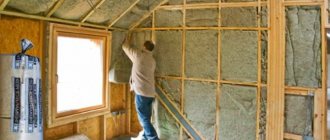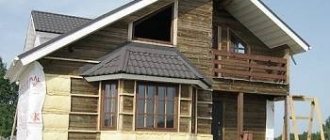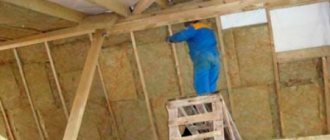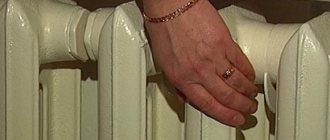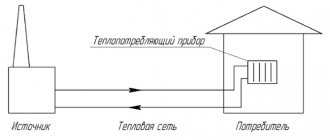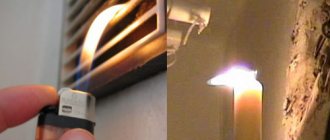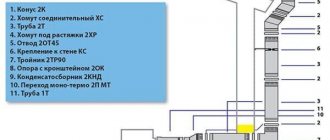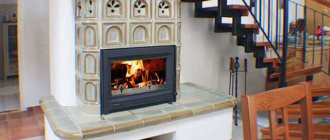[contents]
Where do mice come from under the floor?
The main goal of mice is food. The secondary goal is to build nests and reproduce in the house where the food is. And mice can smell food two kilometers away! (Note that the bear is only a little larger - for five). That is why, if you leave your country house or bathhouse closed for the season, remove from there everything that could attract these animals.
Frame houses are especially targeted because of their design. Such a house can be built very quickly, quite inexpensively and at the same time fully meets all the requirements. But mice in its walls and floor are a real problem. An invasion of rodents into such a house can begin at the construction stage, but it is difficult to get rid of such pests.
But even the most durable, serious building made of bricks or blocks also rarely manages to avoid the proximity of tailed animals - after all, they love to settle under the floor. And, if the walls can somehow be protected with metal sheets, then it is more difficult to drive a mouse out from under the floor. And with the arrival of cold weather, this beast will find any opportunity to get underground.
Although the mice themselves are different. Thus, in the warm season, voles make their nests in the open air - under boards, near garbage. Until autumn they actively reproduce, and at the first cold weather they go into any enclosed space. Moreover, they can get under your floor even through the slightly open front door and right in front of the owners! But domestic mice don’t really peek out from under the floor at all. Moreover, cats easily get used to the smell.
Other methods
The struggle between humans and rodents has been going on for many centuries. People are constantly coming up with new ways to protect their home and property from damage by pests. So, burnt wooden blocks and branches are placed under the floor covering. The smell of burnt wood repels mice. In addition, you can use other aromatic repellers - pine, mint, tobacco, added to the insulation. Red hot pepper is poured around the perimeter of the house and, if possible, into the walls. It is also known that rodents do not tolerate the smell of burning wool. The old method is to put a piece of wool in an old unnecessary saucepan, make several holes in the saucepan and set the wool on fire, then place this container in the basement. The smell of smoke will slowly spread throughout the house, driving the pests away.
Although the concept of building a frame house is not new at all and has been familiar for centuries, this method of construction has become especially famous in recent years. Firstly, the growing need for affordable and high-quality personal housing and, secondly, the emerging manufacturing technologies of current building manufactories make it possible to produce a frame house with high-quality and environmentally friendly
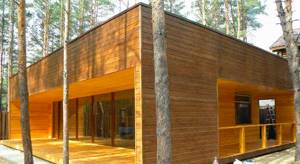
Frame house protection
The most effective methods of protection against rodents will be those that were used during construction.
So, the first methods of prevention are:
- If it is possible to use reinforced concrete slabs, then it is recommended to make the foundation with them, and not with strip or pile foundations. It is extremely difficult to gnaw through them; such a monolithic structure will not allow mice to enter the frame house.
- Ecowool will be the best option as insulation for the floor of the lower floor. It consists of 80% recycled cellulose and a mixture of brown acid and borax by 20%. Such a wood antiseptic will not only protect against pests, but also protect against various insects, mold or mildew.
- It is recommended to treat building materials with lime and borax solution.
- Interior partitions can be filled with slag. In addition, they use tobacco dust, ash, wormwood, and peppermint, which repel mice with its smell.
- Metal mesh is also an excellent means of protection.
These methods are considered quite effective and prevent pests from getting into the frame house.
Let's take a closer look at how to use metal mesh.
Application of metal mesh
When laying the foundation, it can be protected with steel sheets up to 1 mm thick. Thanks to them, rodents will not be able to get into the frame house, because the sheets are slippery, and mice will not be able to catch on and climb onto the foundation, sliding down.
Also at this stage it is advisable to use a metal mesh, which has a number of advantages:
- Environmental Safety.
- A simple and accessible method to use.
- Effective protection.
- Maintains characteristics when changing any temperature.
An important nuance is the correct selection of material. It will be good if the mesh thickness is about 2 mm, and the cell size is no more than 5x5 mm. If they are wider, then mice will either crawl into such a hole or gnaw through the mesh.
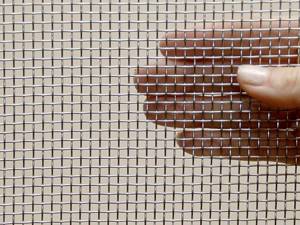
The metal mesh is laid out on the subfloor, after which insulation is placed on it. Wall mounting is carried out to a height of at least 1 m. For the corners of a frame house, you need to use galvanized mesh. If the mesh was not laid at the stage of forming the foundation, then it can be dug around the built house near the foundation. The depth should be about 1 m. A fence of this type can be decorated, for example, with climbing flowers.
Other methods of protection
Most often, mice enter frame houses through the floor, so it is very important to protect it as effectively as possible. In addition to metal mesh, the use of expanded clay is considered a reliable method.
Apply it to the subfloor in several layers. First, expanded clay is sprinkled on the ground, a layer of at least 30 cm. Then a polyethylene film is stretched and OSB boards are placed. After this, the structure is again covered with expanded clay. For this method to be as effective as possible, it is necessary to treat the slabs with boric acid and use borax powder.
Insulation also plays an important role in protecting a frame house from mice. Most often they save on it, without attaching much importance, they choose the cheapest thermal insulation material - polystyrene foam. And this is a big mistake. Gnawing through it is not difficult. Therefore, it is recommended to use, although expensive, reliable material -. In addition, it has excellent soundproofing characteristics, provides good insulation, and prevents the formation of mold or mildew.

How to secure your home even at the construction stage
An invasion of mice is easy to prevent if you think through everything well at the design stage and choose the most correct technology, using materials that will be too tough for rodents. At the first stage, you need to read, or better yet, carefully delve into the current standards for the construction of frame houses. Familiarize yourself with the rules and materials that need to be selected.
They describe in detail the construction rules, what and where to install metal mesh, screens and other systems to protect the house from rodent infestation. Be sure to take into account that when using a metal profile, this, by the way, is another answer to the question of how to protect a residential frame house from mice; it is necessary to leave gaps to prevent the thermal protection layer from getting wet.
Expanded clay castle
This is the case when expanded clay is laid very tightly on the floor to a height of 10 cm. A standard list of such a pie will look like this:
- First, expanded clay about 30 cm high is laid directly on the ground;
- Then it is covered with OSB-3 boards;
- Expanded clay is placed on top again;
- The last layer is particle boards, pre-treated with boric acid and wax of synthetic origin.
- The latter substances are good at repelling mice.
Fine mesh metal mesh
An affordable, simple and very effective way to protect the frame from rodents. A high-quality mesh is a mesh that is made of durable galvanized wire. The mesh is laid on the floor at the roughing stage. Additionally, the base and walls are finished with it.
It is important to process all the joints here. Gaps are unacceptable, otherwise mice will definitely find this gap and enter the house
Insulation materials
Even if mice appear under the floor, they will not be able to get inside the house if the correct insulation or this cake is installed:
- Layer one. A shield made of boards laid on logs;
- Second. The gap between the edges of the floor and the outer cladding is sealed with galvanized strips 10 cm wide. They are fixed to the upper surface of the floor;
- The resulting strips are covered with insulation or sheathing.
These actions will be enough to reliably protect your home from the penetration of even one mouse.
Choice of insulation
If, during the construction of a frame house, ordinary polystyrene foam is chosen as insulation. The material has excellent performance characteristics, it reliably insulates the room, and is inexpensive. Foam insulation has a significant drawback - mice and rats often choose foam as a place to create their nests.
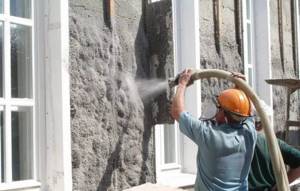
But how to protect a frame house from rodents? To protect your home from pests, opt for ecowool, which is sold in loose form. You can work with the material only if you have the appropriate skills; it is advisable to entrust the process to a professional who will lay the cotton wool using special equipment, securely close all the cracks and eliminate the possibility of rodents entering.
On a note
Mineral ecowool will protect your frame house not only from small and large ones, but also from insects, mold, mildew and other troubles. Vata creates an antiseptic environment. Another advantage of insulation is excellent protection from cold and sound.
Ecowool is prepared on the basis of wood cellulose, it does not contain hazardous substances, and can be used even if there are allergy sufferers and small children living in the house.
Seals are the best way to protect against mice
No matter how many ways they come up with to exterminate small rodents, nothing better than having their natural enemy - cats - in the house has yet to be invented. Firstly, cats cope well with hordes of mice and will clean your house in a couple of days, even if you decide to “rent” a cat from your neighbors. Secondly, the smell of a cat repels rodents better than any poison or pine branches. And your cat will most likely have to hunt mice not in the house, but in the surrounding area.
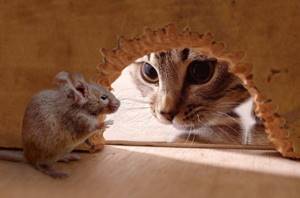
The best protection against mice in the house
Rodents in a frame house
Mice appear in a frame house, as well as in other types of residential buildings, in search of food. If access to food is provided on a regular basis, mice will not only linger, but will also build a cozy nest away from human eyes, begin to actively reproduce and increase the population.
How to prevent mice from breeding.
Often mice appear in the house with the onset of cold weather - optimal living conditions are created in the room. Over time, pests begin to look for food and actively colonize the entire living area of your frame frame.
Mice appear in a private house due to mistakes made by builders during the construction process. If there are gaps between the joints in the wall and floor area, rodents are likely to choose the frame as their home. Since the design implies, then optimal space is created between the panels for the movement of small rodents.
On a note
Mice often breed in the insulation of a frame house, so it is extremely important to choose the right material that is not suitable for rodent housing.
Remember that there are absolutely no obstacles for hungry mice, especially if they smell cereal, flour, sugar, or bread nearby. Try to store any food not in bags or bags, but close everything in airtight containers.
How to get rid of rodents from your home
In the fall, the countless army of insect pests finally gives way and we, having pushed the sprayer that had been torn over the summer into the far corner, finally sigh calmly. But it was not there!
The harmful insects are being replaced by a horde of voles, which, not finding anything edible in the empty garden, rush straight into our homes.
Compared to insects, these pests are much more dangerous: they not only amaze with their extraordinary gluttony and omnivorousness, but also carry severe infectious diseases. Therefore, having noticed the first signs of rodent activity indoors, you need to urgently go on the warpath.
Especially for this purpose, I have collected proven methods of fighting mice in one article. All you have to do is choose the most appropriate option depending on where you will be conducting combat operations: in a private house where you live year-round, a country house mothballed for the winter, a barn or a cellar.
Causes of rodents
With the onset of cold weather, small rodents run into human housing and try to settle down for the winter. Getting into a frame house, where wooden planks are used as a base, will not be difficult. For sharp mouse teeth, wood is no barrier. The presence of cracks in the floor and at the joints makes it easier to enter the room.
The walls of a frame house are upholstered or filled with various types of insulation. Among them there are building materials that mice can easily chew through and build nests inside the walls. Also, animals have the opportunity to enter the house if the insulation is installed incorrectly.
Through the walls and floor of a frame house, mice not only penetrate into the premises, but also settle for the winter - they build nests. To prevent this from happening, you need to think in advance about how to cover a wooden house, and what kind of insulation mice will not chew on.
What harm do rodents cause?
Mice, rats and other rodents can easily enter a frame house without certain protective measures. By doing this, they not only frighten the owners, who are afraid or disdain such guests, but also cause harm. Destruction can occur in any corner of the home. They chew through concrete or wooden floors, wiring, and a wide variety of objects in the house. Often pests destroy winter supplies or other food.
If mice settle in basements, where it is usually damp and dark, they will begin to actively reproduce. In this case, dealing with their huge number is even more difficult. The most dangerous thing is that rodents are carriers of dangerous infectious diseases, for example, cholera, various intestinal diseases, and leptospirosis. Therefore, it is necessary to get rid of them as soon as possible, and for this we will familiarize ourselves with the methods of dealing with mice.
How to get rid of mice in a wooden house
Let's look at the main and most popular ways to get rid of mice in a wooden house.• Nowadays, there are many types of devices for catching mice. These include the notorious mousetraps with a spring mechanism, electric mousetraps, and traps with an adhesive base. You can buy a ready-made one or build it yourself. Any aromatic foods can serve as bait: sausage, cheese, nuts, baked goods and even some sweets. The disadvantage of this method is that in this way you can only get rid of rodents individually, and mouse colonies sometimes number hundreds.
Mousetraps and special glue
The use of mousetraps makes the process of fighting rodents creative in a sense - the owners acquire a sporting interest. A lot of devices for catching mice have been created, and they can also be purchased at hardware stores. Some of them immediately exterminate rodents, others only capture them, and the hunter himself will have to deal with the pests caught in the trap.
The same can be said about special adhesives that are applied in places where mice are expected to migrate - a mouse stuck to the floor will have to be removed and destroyed with your own hands.

Free cheese
Advantages of a frame house
In North America, northern Europe and Germany, a frame house is the basis of low-rise construction; our domestic builders have also already managed to appreciate the advantages of this technology. The use of modern materials makes it possible to make a frame-panel house that is not inferior in strength and reliability to a stone or brick one. At the same time, a frame-panel house compares favorably with:
- speed of construction
, which means lower cost; - less massive
, not requiring a powerful foundation: for frame houses, lightweight types of foundations on piles are used; - lightness of the structure
, which does not shrink, which means finishing work can begin immediately after the walls are erected; - the possibility of construction without reference to the season
, since the building materials used are not afraid of temperature changes; - the use of panels with a smooth surface significantly reduces finishing time
; - the use of sandwich technology allows the use of a wide variety of insulation materials
, the choice of which is determined by the climatic zone; - Modern building materials allow frame-panel houses to compete with traditional ones in terms of heat and noise insulation, fire resistance, and vapor permeability
. - lightness of design and ease of installation allows the architect to create a wide variety of forms
.
A few words about the external decoration of the walls of a frame house
. It is possible to use almost all modern finishing materials: from wooden lining and wooden block house, to vinyl siding and facing bricks. A modern frame-panel house meets all the requirements for a comfortable and aesthetic home: it is built from natural, environmentally friendly materials and can, with the help of design developments, emphasize its own individuality and the character of its owner. Even an entire block consisting of frame houses looks very attractive and has what is called a marketable appearance.
A frame house is good for everyone. It could be called ideal for individual construction, if not for one drawback
, at first glance frivolous:
these are mice
. These little animals make their burrows in expanded clay and glass wool. If they have already settled within the walls of the house, then you will have to rack your brains about how to evict them from there. It may not be possible to do this; perhaps the mice will leave for the summer and return to their equipped burrows by winter.
But don’t be scared in advance, it’s easier to prevent a mouse invasion
than to get them out. This needs to be done at the construction stage, and the solution to the problem of how to protect a frame house from rodents is usually specified in the house construction project. A rodent repeller can help remove mice and rats that have already settled.
Frame house and mice. The myth about the rodent problem.
One of the popular questions in the topic of suburban construction is the question of rodents. It happens that the romance of closeness to nature is overshadowed by their unwanted proximity. And the concept of “cute hamster” becomes an elephant-sized problem. Needless to say, mice and rats can appear in country houses, as well as in city apartments, where they calmly move along the suspended ceiling and under the flooring. There are more gray pests in cities than people. The help of the sanitary and epidemiological inspection service, chemicals and physical barriers saves. But the scale and speed of spread will not allow the animals to completely disappear.
Mice and rats differ in that the latter willingly feast on the former. After all, they are unsurpassed cunning hunters, capturing ultrasound and the slightest movements. Rats are larger, more dangerous and much more cunning than their smaller relatives. They will catch even a small dose of poison in food, remember the route to the trap and warn others, travel hundreds of kilometers in search of warmth and food, which they will eat and spoil in immeasurable quantities over the course of a year. At the same time, unpleasant pests are extremely caring towards sick and weak relatives and are sensitive to impending disaster or destruction.
Mice are smaller in size, growing to a maximum of 9.5 cm and 30 grams of weight, they also adapt well and eat anything, even soap and glue. They can run quickly, swim, climb on different surfaces and surfaces, love cleanliness, so they will build more and more nests in the house if the previous one is even slightly wet or dirty. Mice live less than rats - with a heartbeat up to 500 times a minute you won’t last long - but this is compensated by fertility (up to 120 mice per year from one female) and extreme survival.
It has been proven that rodents have a peculiar ability to capture external heat emanating from the house. When cold weather sets in, they choose shelter for themselves. The better the heat is retained in the house, the lower the likelihood that uninvited guests will make their way to it.
Armor for the home.
You can avoid this unpleasant neighborhood by using simple ways to protect the building and finishing materials from toothy uninvited guests. We are not talking about chemical toxic substances, but about mechanical means in the structure of a building - metal, polymer or purified organics. Protection is planned at the design stage and is laid on the surface of the foundation, plinth and house.
- Metal grid . Galvanized fine-mesh (up to 6 mm cell diameter) mesh made from rods of small thickness. It is used as additional reinforcement before finishing surfaces: floors, walls, ceilings, facades. The mesh is suitable for any coating geometry, including building corners and even in ventilation openings. On the facade and walls, for example, it is mounted overlapping on a perpendicular surface (on ebb or floor), then folded onto the sheathing and a final finishing is performed.
- Metal profiled sheet is a monolithic plane used as permanent formwork. It spreads under both vertical and horizontal surfaces, ceilings, walls, supports. This not only protects your home, but also increases the strength of each structural element.
- Inorganic insulation materials . Expanded clay is a lightweight, porous building material produced by firing clay or shale. It is used for bulk floors or when creating a multi-layer ceiling between floors; it cannot be chewed and is even difficult to get through. Foam glass (foamed glass, cellular glass) is a heat-insulating material that is a foamed glass mass. This material resembles pumice. For production, a mixture of glass chips and reagents is used. The insulation turns out to be quite durable, so it will not be chewed by mice and rats - therefore, it is not interesting for their life. Impregnated insulation materials . Some types of cotton wool are impregnated with antiseptics. The impregnation contains orthoboric acid, which causes thirst and lack of oxygen in mice. There are also insulation materials that are dangerous for mice, the smallest particles of which physically irritate the mucous membrane. At the same time, there is a danger for humans of allergic reactions upon direct contact with the material.
Advice from experienced mousecatchers.
- Avoid excess water residue. If there are plumbing leaks, be sure to fix them. Wipe the floor dry after taking a bath. Store dry dishes in cabinets.
- Do not leave leftover food in the public domain, including among animals. Do not throw garbage near your home area.
- If you notice the slightest presence of mice in the house, lay out mousetraps, baits, and glue traps. If you use poisonous substances, make sure they are out of the reach of children and pets. And most importantly, remember that the death of the enemy may not be immediate and may end under your floor with foul-smelling consequences.
- The help of mustachioed and striped ones will really be indispensable, but not lazy and not decorative.
- And finally, take advantage of the well-known mouse addiction to alcohol - you can simply make them drunk.
Rules for using metal mesh
Protection against mice using metal can be carried out at the construction stage and after the construction of the frame house.
It is recommended to attach solid metal sheets on top of the foundation. They will perform several functions at once - they will prevent moisture from accumulating, add originality to the design, and prevent mice from sneaking into the house. Rodents will slide down on slippery metal.
On the floor, the mesh is laid out according to the rough version, and insulation is laid on top. It is mounted on the walls to a height of 1 m. The corners of the house are covered with galvanized mesh. Such protection will not allow rodents to enter the premises and will ensure complete isolation from rodents.
A metal mesh protects an already built frame house. They dig in near the foundation at a depth of 1 m around the house. Such a fence can then be decorated with flowers. Plant climbing plants nearby. It will look stylish, original, attractive.
Types of rodent nets

- Nets against underground pests:
- Vertical. It is installed in the ground quite deep, since moles are capable of digging tunnels at a depth of up to 50 meters.
- Horizontal. It is laid horizontally to a depth of 5 cm. In this case, the mole, rising up, bumps into the mesh and crawls back.
- Nets to protect the frame from any rodents:
- Plastic. The network is used to cover surfaces, process plaster layers, and secure building facades. But its disadvantage is that rodents can chew through plastic.
- Metal. It is a galvanized mesh with small cells. An excellent option for protecting an already built frame house.
How to get rid of mice in a private house
With the onset of the first cold weather, mice strive to find secluded and warm places where, in addition to warmth, there will be a lot of food. And private houses are perfect for this.
These little pests can settle in the basement and come into the house to profit from something tasty. If you have a cellar, then they can start there too. Thus creating a lot of problems. With its seemingly small body weight, a mouse is capable of eating 30% of its weight in food. Consider the fact that in comfortable conditions a mouse is able to reproduce all year round. You can imagine the scale of disaster that these seemingly cute creatures can bring. Therefore, if you find at least one rodent, you should seriously consider the question of how to get rid of mice in a private home.
Mice can cause serious damage to your property, food, household appliances and upholstered furniture. In addition, they are carriers of many diseases, and animal droppings contain many parasites. Remember about preventive measures, a few simple rules will help you avoid an infestation of mice in your home. • Do not be negligent about cracks in the floor and walls, carry out repair work in a timely manner. Agree, patching up a house is easier than having to deal with an overgrown family of rodents.• Store food in airtight packages or containers. Remember that paper or cardboard boxes are not an obstacle to mice's appetite, and they will easily gnaw them in search of food.• Do not forget about timely cleaning of the house, the smallest crumbs can attract rodents.• The aroma of some plants can repel mice. Therefore, as a way to scare away, you can use mint by simply placing it in the corners of the room. The fresh plant can be replaced with essential oil; it has similar properties.
How to figure out what type of rodent you are dealing with?
As a rule, a person becomes aware of the presence of rats or mice without seeing the rodent itself. It is easy to detect signs of pest intrusion and presence in the premises. They enter private houses, dachas and even apartments through garbage chutes, ventilation passages, sewers, and through entrance doors.
If a person lives in a wooden house or his home is equipped with wooden floors, this is a quick way for mice to get into the middle. They learn about the presence of tailed animals by carved holes in the walls and floors. And only an observant owner can notice what type of pests are in the house. You need to know what kind of rodents you are dealing with in order to choose the right means and methods of control.
The distinctive features of mice from rats are as follows:
- If you find traces of animals, you need to examine them carefully. Mouse paws leave small and frequent marks. In rats, typos are rare and clearer, since they skip. When moving, mice leave trampled paths, and rats leave scuff marks on the walls along the passages.
- You can tell the difference between rats and mice by their excrement. Mice leave behind small droppings in corners, along walls, in places where they stay and feed. In rats, excrement is three times larger.
- Rodents are recognized by damaged objects. Small objects are spoiled by mice, and wooden and hard surfaces are chosen by rats.
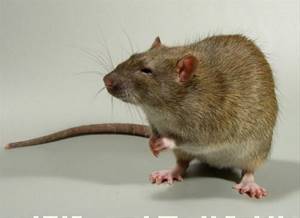
The obvious difference between rats and mice is in size: the mouse has a body length of up to 10 cm, and the rat has a body length of up to 30 cm.
Now you have decided which pests have invaded your home, all that remains is to choose an effective means of extermination. Not all mouse control methods are suitable for exterminating rats and vice versa.
What methods of rodent control exist?
- Rodents in a frame building can be controlled using ecowool in the floors of the lower floor. Ecowool, consisting of 80% cellulose of wood origin and 20% borax, serves as an antiseptic for wood and prevents rodents.
- Some builders, in order to protect premises from mice and rats, spray the blocks with a solution of borax and lime.
- One of the old “old-fashioned” ways of fighting rodents in a building is to add slag, ash, tobacco dust, pine branches, dry burdock, mint, wormwood, etc. to the insulation.
- In some homes, to protect against rodents, metal mesh is used, which is placed in places where rats and mice can enter. You can lay a grid, for example, in a floor structure. A monolithic reinforced concrete slab as the foundation of a home will also protect against this problem.
Chemical substances
The most effective way to control small rodents, insects and other pests in the house and garden is poison. The method is not entirely humane, but it allows you to solve the problem very quickly. Such products are available in a variety of forms. These can be solid briquettes, dough briquettes, poisoned grain, granules, which retain their poisonous properties for quite a long time. In addition, the cost of drugs offered on the market varies greatly, which allows you to choose the most suitable remedy.
The poison, entering the rodent's body along with the bait, causes the death of the animal, even if the amount of the substance was very small. This method requires caution, since when working with toxic substances there is a risk of poisoning yourself. Therefore, you need to work with poison with gloves and, preferably, in old unnecessary clothes, which you can then simply throw away. The poison must be located in places that are difficult to reach for the inhabitants of the house, so that no one in the household can get poisoned. Pets should also be carefully protected. Before you begin, carefully read the attached instructions, description of the product, and evaluate your capabilities.
There is one point that can cause trouble for the residents of the house. If a mouse that has eaten poison crawls into a hard-to-reach place before dying. In this case, it will rot, emitting an unpleasant odor for a long time. You will have to look for the source of the smell, open the floor or dismantle the walls.
Fact: modern poison manufacturers offer a product after which the animal begins to experience suffocation and tries to leave the premises. This can help prevent odor in some cases.
Protecting your home from rodents during construction
To prevent small animals from appearing in your home, you need to understand how they enter your home. This:
- Various gaps between elements of the house
- Layers of soil in contact with the house that are easily traversed by mice
- Storage within the home space of things and crop products where mice have already settled - grain, hay, straw, etc.
However, during any construction, you need to carefully ensure that the presence of various holes and cracks in the house is minimal - besides, this is also required by proper thermal insulation of the building. The most problematic areas are:
- Gaps in the floors
- Slots in openings, ventilation gaps
- Ventilation holes in the foundation
It is even more difficult to deal with the ground, where mice can easily dig through their passages, trying to get into the house. If the foundation and lower floor are in contact with the ground, then mice will definitely get to the inside of the house.

If the house stands on a traditional reinforced concrete foundation, then there is another way to protect against mouse “tunnels” in the soil. Along the perimeter of the house, at some distance from the foundation, a metal mesh with small holes is buried vertically into the ground. The recommended installation depth of the fencing mesh is at least 80 cm. Mice usually cannot make moves below.
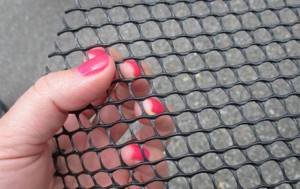
Finally, in order not to bring mice into the house along with the harvest, you need to carefully control each portion of it stored inside the house - sift grain, hay, straw, etc.
All these measures are only the first stage in the fight against rodents entering the house.
Among other things, you need to understand where it would be best for them to nest. This is usually:
- Voids in cladding, partitions, etc.
- Insulation thickness
- Places where garbage and old items are stored
- The same productive “bins” stored in the house
- Pockets of heat, such as cavities near radiators or a stove
Obviously, mouse comfort should be disturbed, and as harshly as possible. The use of insulation itself is considered a particularly big problem, especially in frame houses, where it makes up up to 75% of the total volume of the walls. There is even a prejudice that the use of insulation leads to the “breeding” of rodents in the house and is almost a breeding ground for them. There are also legends about foam in the siding of a house being eaten by mice. There is, of course, a grain of truth in this. It is doubtful that polystyrene foam is a means of feeding mice, but they settle in it quite comfortably - warm, dry. And it’s very easy to break through passages, so sometimes they destroy the entire thermal insulation shell.
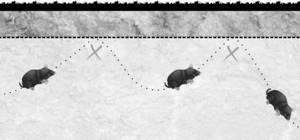
In order to repel mice from such “cozy” places, the insulation must have certain properties, and also possibly be processed additionally, which we will discuss in more detail below.
Summarizing what has been said, we note that at the stage of building a house, protection from rodents means creating the densest possible shell of the house and monitoring the places of their possible nests.
Rodents are eternal companions of humans
The reason for the appearance of mice in a person’s house is simple: they are essentially parasites, and they always settle where a person has created comfort and warmth for himself with his own hands and where he takes food, where he creates its reserves - also for himself. Unlike large animals, which also would not disdain the “hospitality” of humans, but which people have learned to successfully cope with on their own or with the help of their best friends - dogs, rodents are small, agile and cunning. Liming them completely is the dream of more than one generation, which has still not been achieved even in the most comfortable homes.
What attracts rodents to our buildings? What contributes to their settlement in our homes?
First of all, these are, of course, food sources. We rarely think about how much waste remains from our feasts, unnecessary for humans, but very suitable for rodents to eat in abundance.
Secondly, this is the comfort created by a person for his own living, and most importantly - warmth, dryness, reliable hydro- and thermal insulation of the home.
In addition, the design of our houses, helping to create warmth, coziness and comfort, creates additional opportunities for mice to settle in our homes:
The presence of all kinds of cavities where small animals can hide. This is the space between the partitions of the internal walls (and in frame houses and in the walls themselves)
- Gaps between house elements
- Ventilation gaps created during cladding
- The use of insulation that warms not only the house, but also mouse nests
- Leaky trash cans with food leftovers

Rat hole in the foundation
Mouse repellers
Since ancient times, mice have been repelled by odorous substances of plant and animal origin.
Peppermint ranks first among herbal repellents. It is planted near homes, in vegetable gardens and front gardens, and dried for the winter. Mice cannot tolerate the strong smell of grass and try to avoid contact with it.
Ash is considered to have a strong deterrent effect. It can cause allergies in mice. Animals try to avoid places where ash is scattered.
Ultrasonic rodent repeller
Among animal repellents, snake excrement is considered effective. Mice have a genetic fear of snakes. If you sprinkle a little snake-smelling substance in the habitats of mice, the mice will leave.
Using an ultrasonic rodent repeller is the easiest way to scare rodents away from your home. There is no need to construct something, install it, choose a treat, or rack your brains over what to do with the caught animals. We plugged the device into the outlet, and the troubles were over. It can be used in residential and non-residential premises.
For reference! Ultrasound has the properties of being reflected from walls, ceilings, and absorbed by soft coverings - carpets, rugs, upholstered furniture. Another disadvantage is that they do not pass through main walls. To protect several rooms with one device, it is installed in the corridor or hallway, and the doors to the rooms are left open.
Poisons will quickly get rid of rodents, but there is no guarantee that they will not harm the health of humans and pets. Catching mice using mousetraps - traps and repellers - is a humane and safe method.
What kind of insulation do mice and rats like?
All thermal insulation materials can be schematically divided into two groups. The first includes insulation materials that rodents use as nests or for boring teeth. The second group includes building materials that are of absolutely no interest to rodents.
If you plan to use insulation from the first group, then you should take care of their additional protection.
The main parameter by which rodents choose housing for themselves is that the material must have low density, be warm and dry
The insulation materials favored by rodents include:
- Styrofoam;
- Pepoplex;
- Mineral wool;
- Chipboards;
- Penoizol.
Styrofoam
Polystyrene foam is most often used when carrying out work on insulating premises. This popularity is due to the lightness of the material, affordable cost and does not cause problems during installation work. Rodents also loved the material.
If rodents get into your home, the foam may not be enough for several seasons
The animals will gnaw through the insulation and then arrange a place for their home. In addition, rodents crumble the material into small fractions and use the pieces to insulate their nests.
Some owners of private houses try to fight pests by placing various poisons directly under the cladding. This method of control is quite controversial, since the rodent can die right in the insulation, and the decomposing body will cause an unpleasant odor in the house. To remove the corpse, you will have to dismantle the structure.
Penoplex
Extruded polystyrene foam is a modern version of conventional polystyrene foam. It differs from the base material in improved resistance to high air humidity. The material is used for insulation of residential and industrial premises. It is widely believed that due to its high density and strength, rodents avoid it, but this is not true. Mice and rats destroy polystyrene foam no less readily than regular polystyrene foam.
Penoplex, like foam plastic, is not eaten by rodents, but they use the material to build a nest.
Rodents do not eat Penoplex, but they violate its thermal insulation properties.
Remember that penoplex whose integrity has been compromised almost completely loses its thermal insulation characteristics, and restoring the insulation will require significant physical and financial costs from the home owner.
Mineral wool
Despite promises from manufacturers that rodents do not use mineral wool to build their nests, using insulation will not help protect your home from pests.
Rodents not only use mineral wool to build their homes, but also live in this insulation much more often than in many others. Experts have found that in mineral wool, rodents create the most optimal and closest to natural conditions for permanent residence.
The material has enormous advantages over other insulation materials, but resistance to rodents cannot be considered one of its advantages.
Mineral wool has excellent soundproofing characteristics, so you won’t even hear rodents inside
Chipboards
If you decide to insulate your house with chipboards, then you should think in advance about how to protect the material from rodents. Like all similar materials, chipboards are made of wood, and therefore will not become a serious obstacle to entry into the home for mice and rats.
Penoizol
There is an opinion that, unlike polystyrene foam, the liquid material penoizol is too tough for mice and rats, but this is a fairly common misconception.
You can do a simple experiment - just seal the mouse hole with this insulation and wait a while. The material will not become an obstacle in the path of the rodent, since very soon a hole will appear in it.
The sheathing creates passages for quick movement around the house. It is interesting that rodents also do not use penoizol to furnish their homes, preferring other materials.

